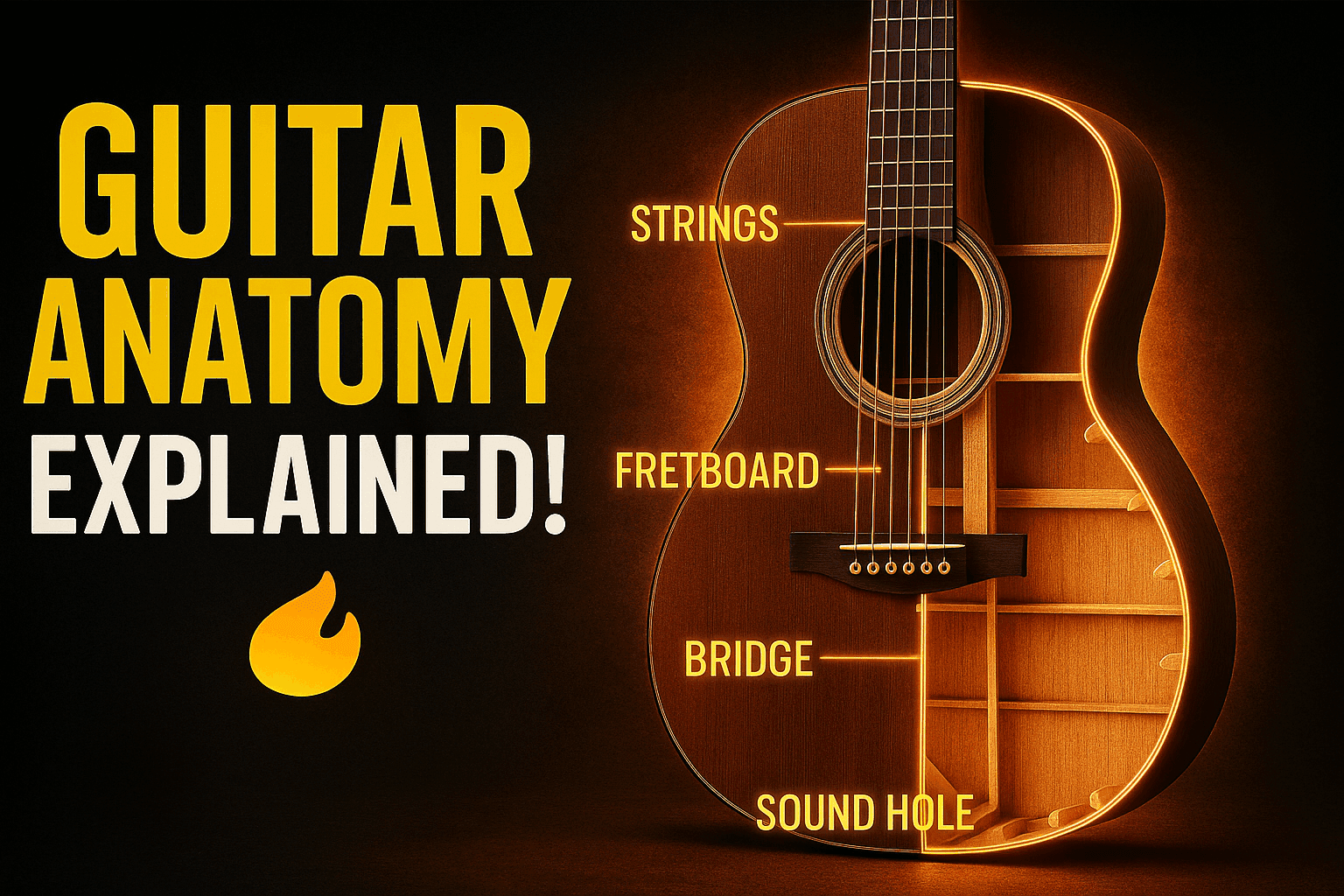
Art Gharana — 10 Mins read
Guitar Anatomy: Complete Guide to Different Parts of a Guitar
Musical Instruments
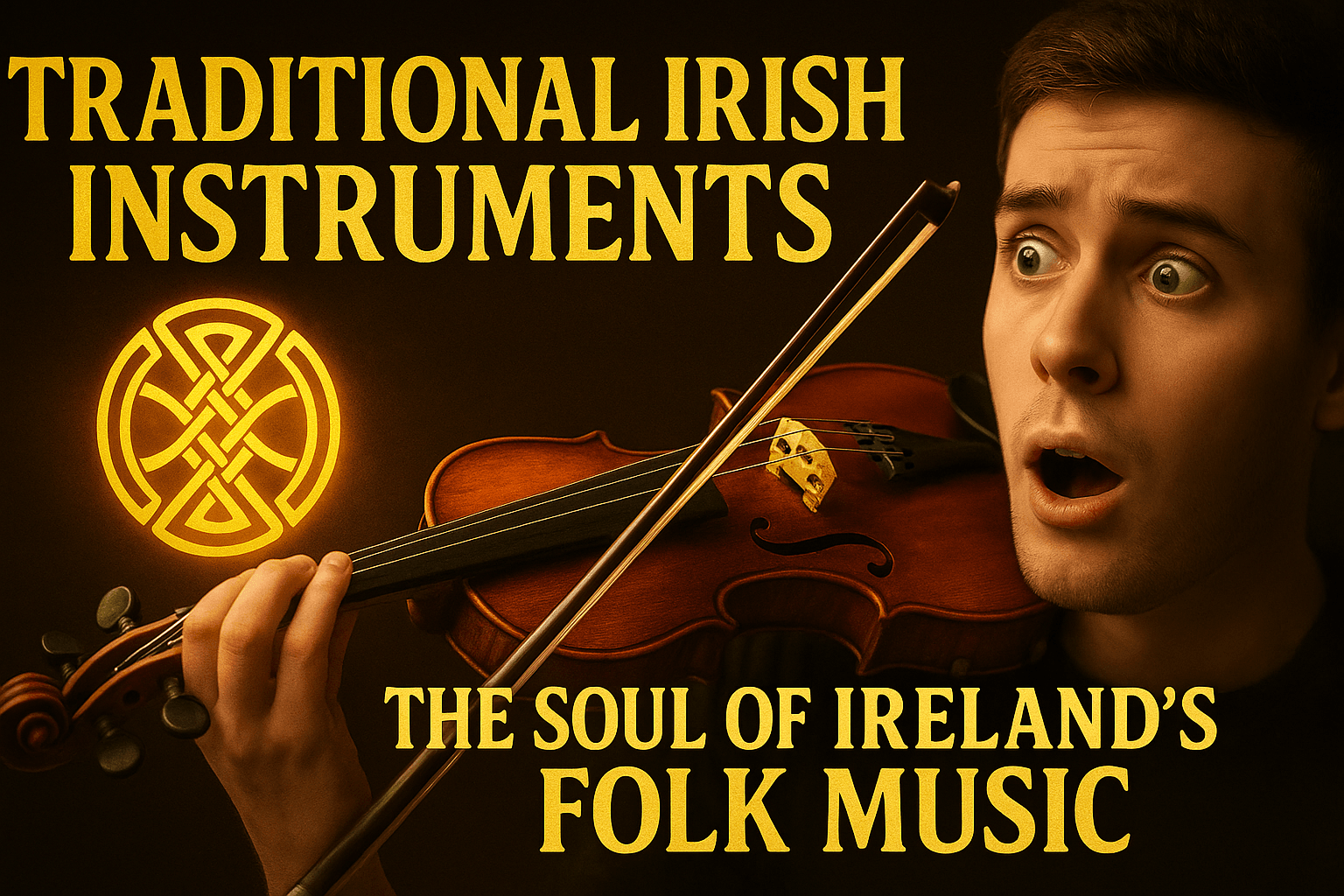 Ireland’s folk music carries centuries of history, emotion, and storytelling. Its timeless melodies and rhythmic charm are powered by a fascinating range of traditional Irish instruments that have shaped the very essence of the country’s musical identity. From the steady beat of the bodhrán drum to the soulful notes of the uilleann pipes, each instrument has helped define the heartbeat of Irish music and inspired musicians across generations.
Ireland’s folk music carries centuries of history, emotion, and storytelling. Its timeless melodies and rhythmic charm are powered by a fascinating range of traditional Irish instruments that have shaped the very essence of the country’s musical identity. From the steady beat of the bodhrán drum to the soulful notes of the uilleann pipes, each instrument has helped define the heartbeat of Irish music and inspired musicians across generations.
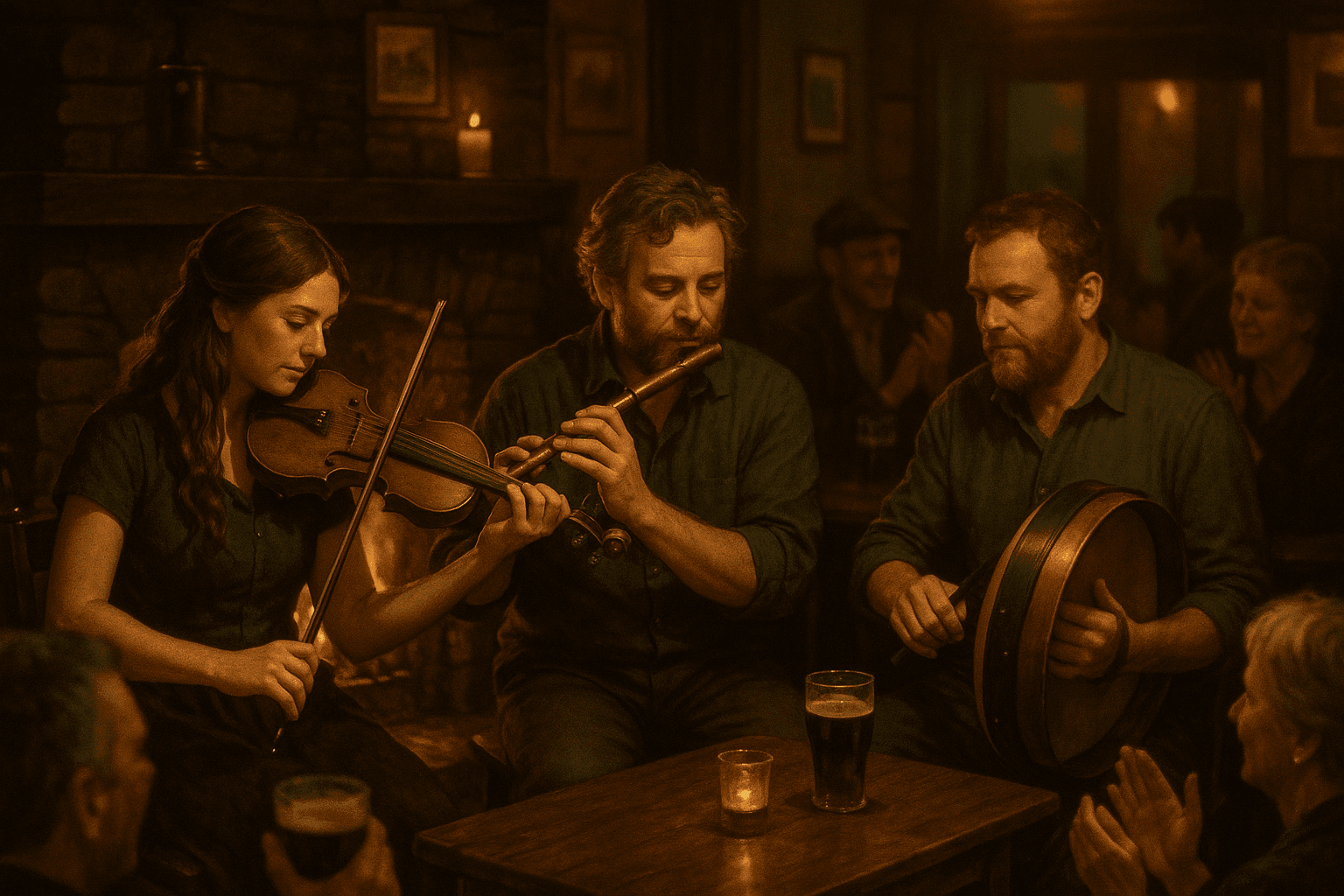
The story of Irish traditional music dates back over a thousand years. Rooted in ancient Celtic instruments and rhythms, it evolved through oral traditions passed from one generation to another. In rural Ireland, music wasn’t just entertainment—it was a way to preserve history, culture, and storytelling. The Irish fiddle and Celtic harp became central to village gatherings, dances, and celebrations, creating a sense of unity among communities. Over time, Irish musicians began to combine European and local influences, giving rise to what we now call traditional Celtic music. Instruments like the Irish wooden flute, the Irish bouzouki, and the Irish concertina added layers of melody and rhythm that shaped the music of Ireland into something truly unique.
The development of traditional Irish music wouldn’t have been possible without the influence of its instruments. Each one contributes its own voice: the Irish fiddle adds sparkle and movement, while the bodhrán drum drives the rhythm forward. The uilleann pipes bring emotional depth, and the Celtic harp expresses grace and nobility.
These instruments shaped Irish folk culture by setting the tone for dance styles such as reels, jigs, and hornpipes. The balance between melody and rhythm defined the core sound of traditional Irish music and created a lively, social experience known as Irish sessions—where players gather to share tunes, stories, and friendship.
From rural Irish pubs to international music festivals, traditional Irish instruments have travelled far beyond their homeland. Irish immigrants brought their instruments and music traditions to the UK, the US, Canada, and Australia, influencing folk, country, and even rock genres. Bands like The Chieftains and The Dubliners popularised Irish folk tunes globally, inspiring a new generation to learn Irish music.
Today, traditional Celtic music continues to evolve while preserving its roots. Its instruments remain symbols of Irish heritage and cultural pride, resonating with audiences who value authenticity and storytelling through sound.
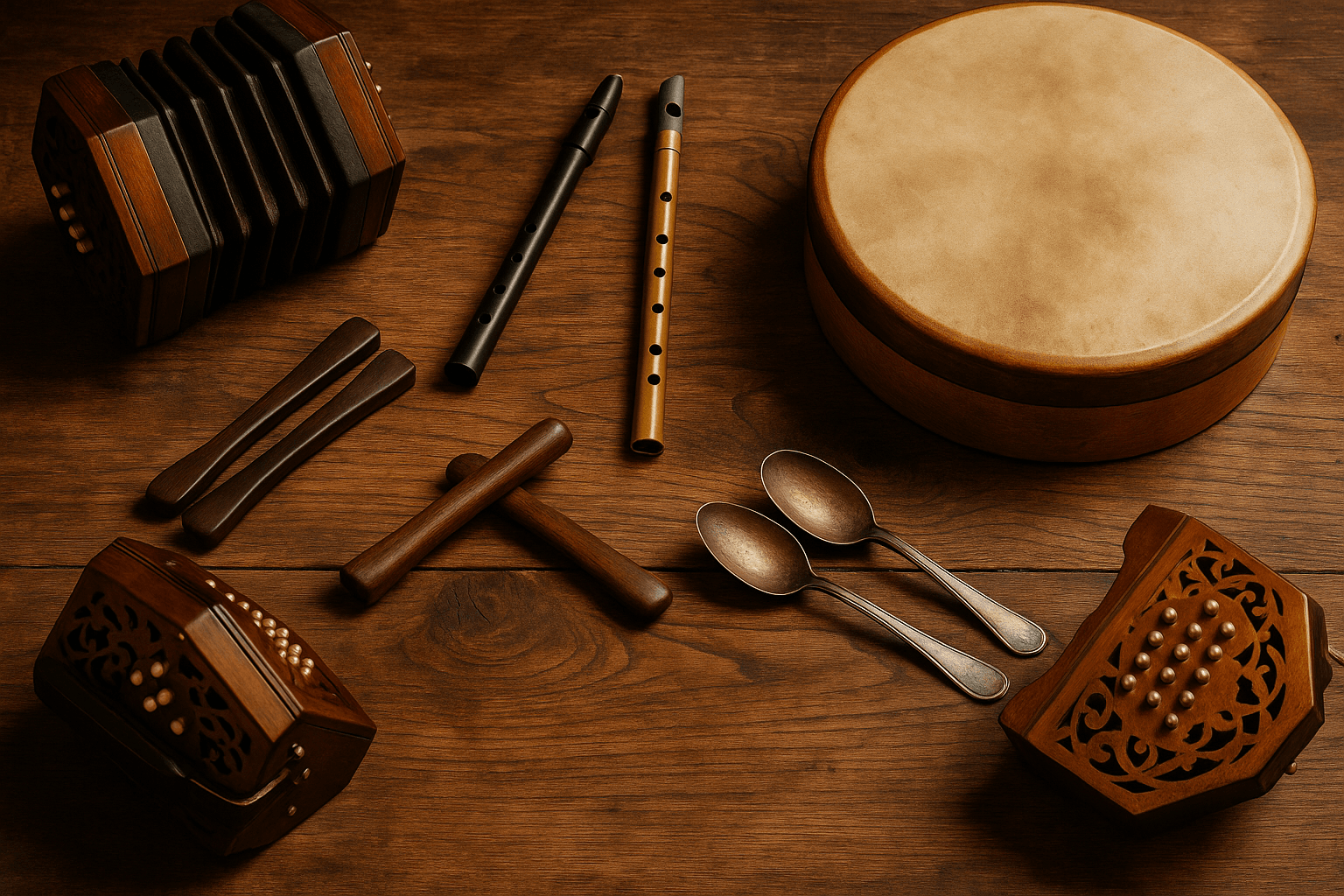
The bodhrán is often called the heartbeat of Irish music. This traditional Irish drum, made from a circular wooden frame and stretched goatskin, provides the pulse behind every Irish session. Played with a wooden tipper, it adds energy and depth to tunes, especially during fast-paced dances like jigs and reels.
The bodhrán’s role in Irish folk sessions has grown over time. Once considered a rural rhythm tool, it’s now recognised as one of the most iconic Irish instruments. Renowned players like Rónán Ó Snodaigh and Johnny “Ringo” McDonagh helped elevate it to professional performance levels, showcasing how a simple drum can shape the atmosphere of traditional Celtic music.
The Irish fiddle, or Irish violin, has long been the soul of Irish melodies. While identical in structure to the classical violin, its playing style is what makes it unique. Irish fiddlers use ornamentation, slides, and quick bowing techniques to give life to folk tunes. The fiddle’s tone varies from region to region—Sligo style is lively, while Clare style is smoother and lyrical.
This instrument has been vital in keeping the music traditions of Ireland alive. From Michael Coleman’s energetic recordings to Martin Hayes’s expressive performances, the Irish fiddle remains one of the most popular Irish musical instruments heard across the world.
Unlike the Scottish bagpipes, the uilleann pipes produce a sweeter, more melodic tone. Often referred to as the modern versions of Irish pipes, they use bellows operated by the elbow instead of mouth-blown air, giving the piper more control over dynamics and pitch. The word “uilleann” actually means “elbow” in Irish.
These pipes have deep roots in Irish music history. They’re complex to master, requiring patience and precision. Yet, their haunting sound can move listeners like few other instruments can. Legends such as Seamus Ennis and Liam O’Flynn demonstrated their ability to capture both sorrow and joy through the pipes, making them a true symbol of Irish musical heritage.
The Celtic harp isn’t just an instrument—it’s the Irish national emblem harp, a proud symbol of identity seen on Irish coins and government seals. It dates back to ancient Celtic times and was played in royal courts and gatherings. With its delicate strings and graceful frame, it represents nobility, artistry, and tradition.
Many regard the Celtic harp as the most elegant of all Irish instruments. In earlier centuries, harpists were held in high esteem, often composing music for chieftains and poets. Today, the instrument continues to feature in both classical and folk performances, keeping Ireland’s noble sound alive.
The Irish wooden flute and tin whistle are beloved for their warm tone and playability. The flute produces a deep, mellow sound, while the tin whistle delivers a bright, crisp melody that cuts through a session beautifully. Together, they are essential in creating the melodic flow that defines Irish folk tunes.
Learning how to play Irish instruments like these is often recommended for beginners. They’re affordable, lightweight, and perfect for exploring traditional Irish music before moving on to more complex ones like the uilleann pipes or concertina.
The Irish button accordion and Anglo concertina became staples in Irish dance music during the late 19th century. Their bouncy, rhythmic tones are ideal for reels, polkas, and hornpipes. The concertina’s small, hexagonal shape makes it easy to carry, while the accordion provides a stronger, more powerful resonance.
Both instruments shine during traditional Irish folk sessions, where their sound fills the room with infectious rhythm. Famous Irish musicians like Sharon Shannon have popularised these instruments, proving that even small squeezeboxes can lead the dance floor with flair.
Introduced from Greece in the 1960s, the Irish bouzouki quickly became a favourite among folk musicians. Its bright, chiming tone complements the fiddle and pipes beautifully. Although a newcomer, it has earned a permanent place in traditional Irish music thanks to its versatility and ability to blend old and new sounds.
Musicians such as Andy Irvine and Dónal Lunny helped define its role, showing that Irish music thrives on evolution as much as preservation. The bouzouki now bridges the gap between modern creativity and traditional Celtic music roots.
The banjo and mandolin add sparkle and liveliness to Irish folk culture. The banjo’s sharp tone gives energy to fast-paced dance tunes, while the mandolin brings warmth and clarity to slower airs. Together, they add variety and texture to ensembles, keeping the energy high in any Irish session.
Although these instruments originated elsewhere, they fit seamlessly into Irish folk traditions. Their adoption proves how adaptable the music of Ireland truly is—always open to new influences while staying true to its essence.
The guitar might not be an ancient Celtic instrument, but it’s now an essential part of Irish folk sessions. Its role is to provide harmonic structure, rhythm, and support for melody players. Guitarists often use alternate tunings like DADGAD to achieve the droning resonance that complements traditional tunes.
The instrument’s versatility has made it a favourite for singers and instrumentalists alike. Its presence in modern Irish folk music bridges traditional rhythms with contemporary sensibilities.
Small but mighty, the harmonica is one of the most portable Irish folk instruments. It offers expressive control over pitch bends and phrasing, adding a rustic charm to traditional Irish melodies. Its compact size makes it an easy Irish instrument to learn and carry anywhere. From buskers on Dublin’s streets to festival performers, the harmonica continues to add warmth and nostalgia to Irish folk culture.
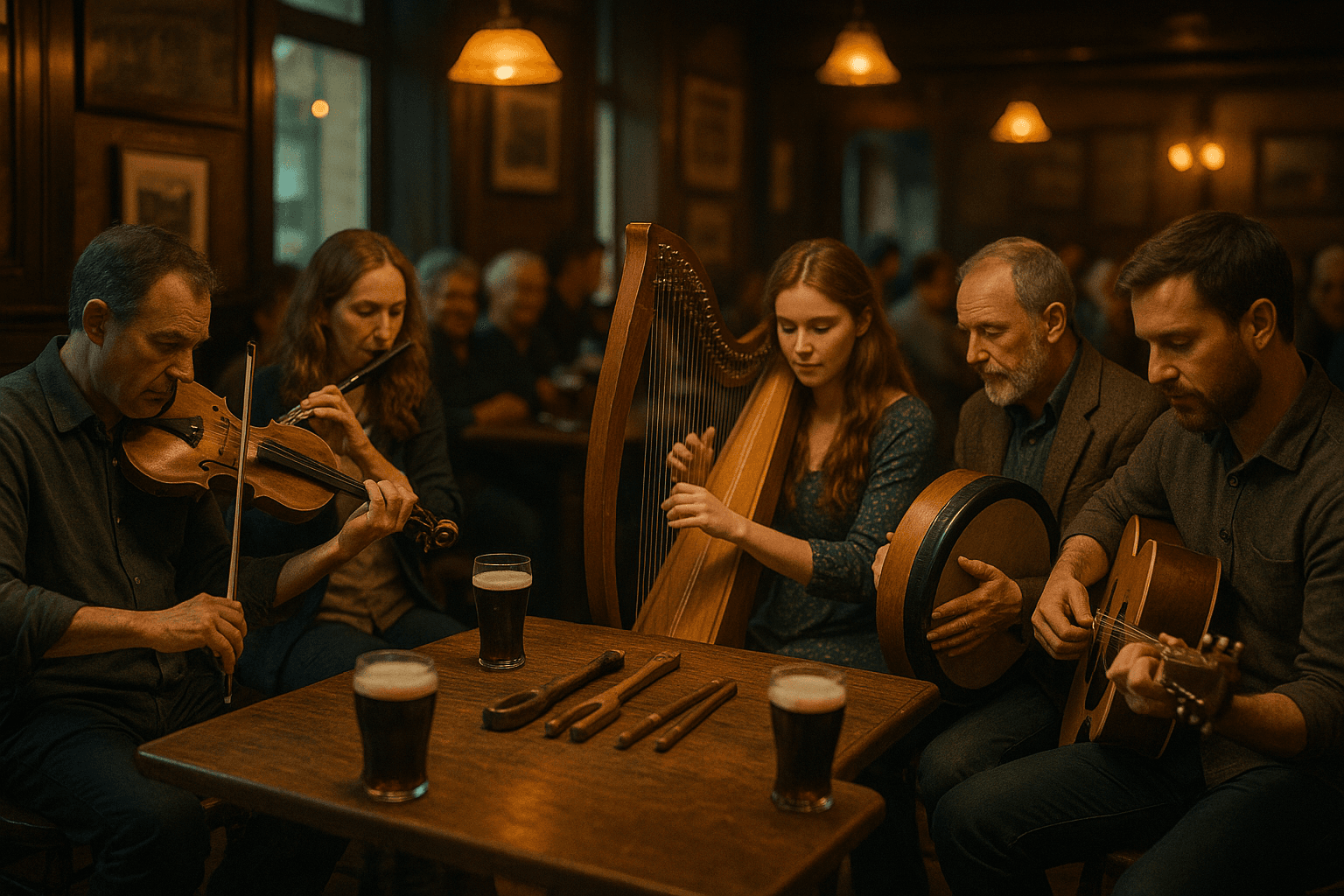
Before the bodhrán gained popularity, Irish musicians used everyday objects like bones and spoons to add rhythm. These humble instruments are still played in traditional Irish folk sessions. Their clacking tones provide a sharp counterpoint to the melody and connect directly to Ireland’s rural past.
The bodhrán has inspired several frame drum variations used in different regions. Some use thinner skins for sharper tones, while others prefer thicker hides for deep resonance. Each version contributes its own texture to the overall rhythm section of Irish music, showing how regional craftsmanship shaped sound traditions.
While both look similar, the tin flute and penny whistle differ in tone and key. The tin flute offers a more refined sound and greater control, whereas the penny whistle is bright, cheerful, and easier for beginners. Both remain popular choices for anyone starting their journey to learn Irish music.
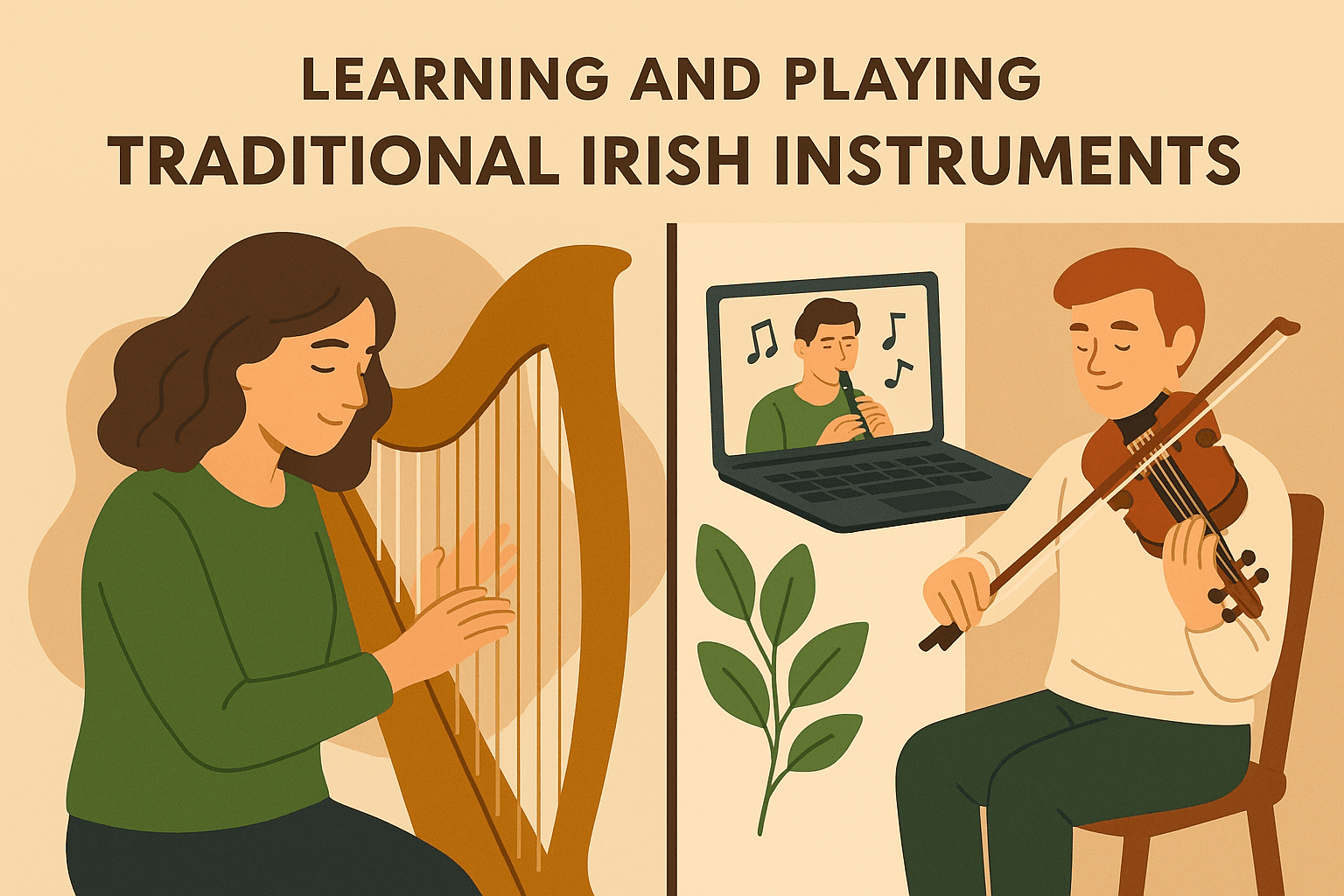
A traditional Irish band usually combines melody instruments like fiddles, flutes, and pipes with rhythm instruments such as the bodhrán and guitar. This mix creates the rich, layered sound that defines Irish folk culture. The interaction between players is essential—no two performances sound exactly alike.
Irish folk music revolves around specific tune types. Reels are fast and lively, jigs have a bouncy rhythm in 6/8 time, and hornpipes are slower with a swinging pulse. Each dance form demands precision and expression, giving traditional Celtic music its diversity and charm.
Instruments used in Irish folk sessions must blend smoothly. Fiddles and flutes carry the melody, while the bodhrán and guitar provide the beat. Achieving harmony between melody and rhythm requires skill and listening—a hallmark of mastering Irish folk instruments.
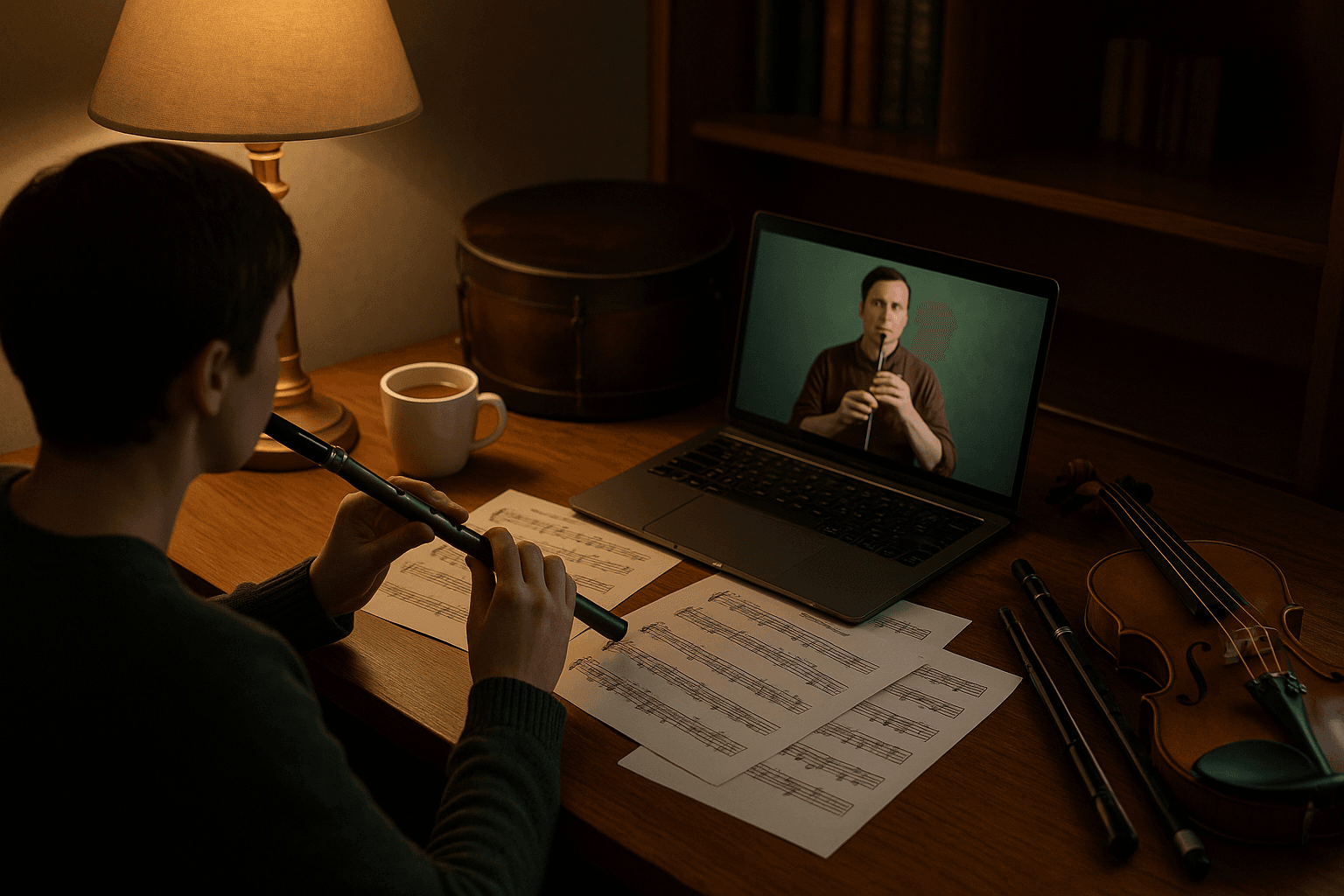
Beginners often start with easy Irish instruments like the tin whistle, bodhrán, or concertina. These allow new players to quickly learn Irish music fundamentals and join local sessions without needing years of training. They also help build rhythm and ear-training skills essential for traditional Celtic music.
Today, many websites and platforms offer Irish music lessons for every skill level. Platforms like OAIM (Online Academy of Irish Music) and YouTube tutorials help learners anywhere in the world explore how to play Irish instruments. These resources preserve Irish musical heritage by making learning accessible to everyone.
Playing traditional Irish music takes practice and patience. Listen to recordings of famous Irish musicians, attend local sessions, and focus on timing and ornamentation. The more you immerse yourself, the more naturally the rhythms and phrases of the music of Ireland will come alive in your playing.
Some of the main traditional Irish instruments include the fiddle, uilleann pipes, Celtic harp, bodhrán, accordion, flute, and tin whistle. Each one contributes its own tone and personality to the Irish folk sound.
The tin whistle, bodhrán, and concertina are considered among the best Irish instruments for beginners. They’re simple to play yet full of expression.
Yes, traditional Irish instruments are widely used in folk, fusion, and even pop music. They continue to inspire artists worldwide while maintaining strong ties to Ireland’s roots.
Unlike Scottish bagpipes, the uilleann pipes are played using bellows under the arm. They produce a softer and more melodic sound, ideal for indoor performances.
Authentic instruments can be purchased from specialised Irish stores such as McNeela Music in Dublin or online marketplaces that support Irish craftsmanship. Always look for makers with verified experience in traditional Celtic music.
Traditional Irish instruments represent more than just music—they embody centuries of Irish heritage and storytelling. From ancient Celtic instruments to modern innovations, each piece continues to shape and define the sound of Ireland.
The beauty of Irish music lies in its timeless appeal. Whether it’s the soulful wail of the uilleann pipes or the rhythmic pulse of the bodhrán drum, these instruments that shaped Irish culture continue to inspire musicians to carry the legacy forward, ensuring the heart of Ireland’s music beats for generations to come.